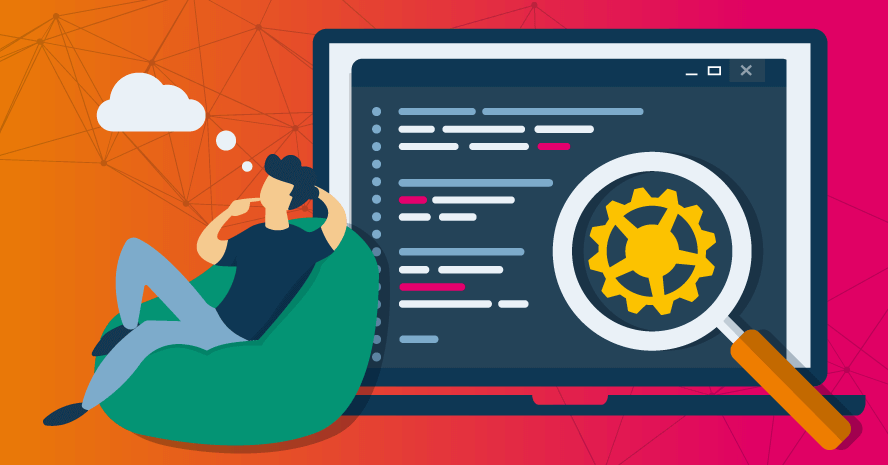This is a guest post by Raj Subrameyer.
Rust, Dart, Elixir, Julia, Crystal … There are numerous programming languages, and it is hard to keep up with all of them.
Testers are expected to have some technical knowledge to help them better test complex systems. Because after all, testing is more than just checking out the GUI. It is about what happens underneath the hood in terms of APIs, databases, microservices, and much more. Testers who want to get technical should start by learning some new programming languages.
But which should you learn? There are so many languages to choose from that there is often confusion about where to start your journey and what would be useful for your career growth. Fortunately, there are some languages that are practical to know as a software tester, no matter which company, product or framework you may work in.
Here are the programming languages you need to know to become a better technical tester.
HTML
HTML (Hypertext Markup Language) is the backbone of any document displayed in your web browser. It helps to render text, images, and other media into a human-understandable format. HTML is also often used in conjunction with other scripting languages to make a webpage more functional and robust.
Any tester needs to have a basic understanding of how HTML works and how to read commonly used HTML tags such as <img>, <p>, <a>, <span> and much more.
W3Schools is where many people start their journey into HTML. But there are a host of other free and paid resources available online.
CSS
CSS (Cascading Style Sheets) helps to describe the presentation of a document written in HTML. It is a language used to style an HTML document and make it look pretty by enabling the separation of presentation and content. Every webpage has some sort of CSS, as it helps share formatting, increases reusability, reduces complexity and repetition, and can be cached to improve page load times.
There are some common CSS elements used in almost every page that testers need to be aware of, especially when investigating rendering issues in pages.
JavaScript
The world runs on JavaScript. It is one of the primary languages used in website development, and the odds are that any website you visit will have several JavaScript libraries providing different functionalities to the user. Some commonly used JavaScript libraries are React, Ember.js, Vue.js, AngularJS, and Node.js.
JavaScript is one of the most popular programming languages, and about 96.7% of all websites use it, including Google, YouTube, Amazon, and Facebook.
For testers, learning JavaScript is essential in two ways: It helps them identify problems on the webpage happening underneath the hood, and it lets testers create and manage their own automated tests. Many automated testing frameworks use this programming language, including Mocha, Jasmine, Nightwatch, Selenium WebDriver, Protractor, and Puppeteer.
Java
Over the past few decades, many useful programming languages have become obsolete, but Java is not one of them. It continues to be one of the most widely used and powerful programming languages in the industry. It is used for developing mobile, desktop, and web applications, web servers, games, and much more. The biggest advantage of using this language is it works across different platforms, such as Windows, Mac, Linux, and Raspberry Pi. Also, there is large support for it from the software community.
Java is often a popular programming language used with the Selenium framework, so it is good to understand the basic constructs of the language if you are tasked with building robust automation frameworks.
Python
Code readability is one of the most important factors stressed during software development. Prioritizing readability helps teams to collaborate and better maintain code. This is one of the main reasons Python is used by many organizations to build applications. It has great support in the software community, it is easy to learn, and its emphasis on natural language keeps the syntax simple.
Robot, PyTest, and PyUnit are popular testing frameworks used for automated testing, and all of them use Python. If your organization is planning to use these frameworks, testers need to know the basics of the Python programming language.
Ruby
Ruby is similar to Python in terms of being a general-purpose programming language with a focus on simplicity and productivity. One of the most popular extensions of Ruby is the Ruby on Rails web application framework. This framework is used to build robust applications including Basecamp, GitHub, Shopify, Twitch, Airbnb, Hulu, Square, and much more.
RSpec, Cucumber, and Minitest are some popular testing frameworks used in conjunction with Ruby on Rails, so it helps to know Ruby if you are working with these frameworks.
Transitioning into becoming a more technical tester is easier if you start from the top of the list with HTML and work your way down. The more basics of programming languages you know, the better you can investigate complex applications underneath the hood.
Raj Subrameyer is an international keynote speaker, writer and tech career coach with a rich technical background. In his blog, rajsubra.com/blog/, he posts inspirational news, resources, and updates to help his readers lead a better life.





